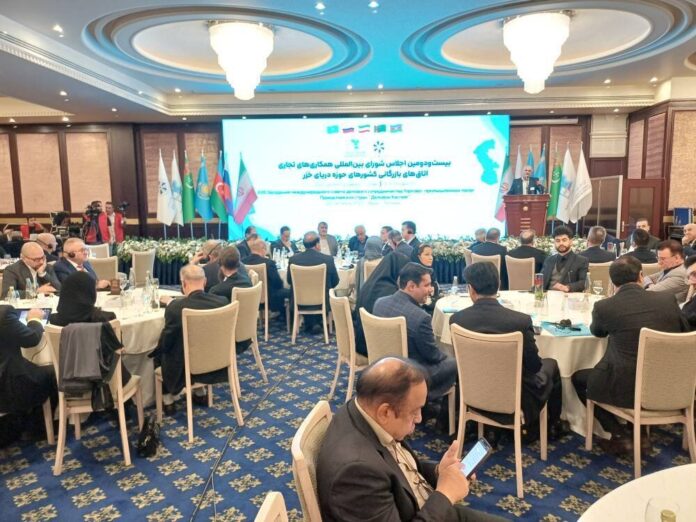TEHRAN – Over 80 percent of trade between Iran and Russia is now conducted in their national currencies, the rial and ruble, marking a major step toward financial independence and reduced reliance on third-party currencies, the head of the Russia–Iran Business Council said.
Speaking at the 22nd meeting of the International Council for Cooperation among Caspian Chamber of Commerce members, Leonid Lozhechko said Iran and Russia are taking new steps to deepen bilateral economic ties by easing trade regulations, developing infrastructure, and expanding collaboration in technology, agriculture, and the International North–South Transport Corridor (INSTC).
Expanding bilateral trade and cooperation
Lozhechko noted that the council is pursuing a strategic plan to enhance cooperation in advanced technologies, telecommunications, medicine, and particularly cybersecurity. He said about 60 percent of bilateral trade is related to agricultural products, with Russia exporting grains, wood, oilseeds, chemicals, aluminum, coal, and steel to Iran, while Iran supplies spare parts, energy products, ceramics, cement, and agricultural goods to Russia.
He stressed that one of the council’s priorities is simplifying regulations under the Eurasian Economic Union framework to unlock the full potential of trade between the two countries.
Lozhechko added that representatives from Russia’s ministries of industry, economy, and agriculture, as well as banks from both nations, participated in the event.
“We are determined to remove bureaucratic barriers so that trade between Iran and Russia can reach its true potential,” he said.
Caspian region’s growing economic role
Dmitry Kurochkin, vice president of the Chamber of Commerce and Industry of the Russian Federation, highlighted the Caspian Sea’s strategic importance in the emerging global economic order. He said the Caspian region’s rich energy resources, transit routes, and geo-economic position could transform it into a major global development hub.
He emphasized the INSTC’s potential to turn the Caspian region into a multimodal transit corridor linking global transport routes and boosting exchanges among Iran, Russia, Azerbaijan, Kazakhstan, and Turkmenistan.
Kurochkin also pointed to growing Russian business interest in Iran’s market, citing Tehran’s upcoming free trade agreement with the Eurasian Economic Union and its membership in BRICS as opportunities to expand private sector cooperation.
He announced plans for joint investment projects through 2030 under the Commonwealth of Independent States (CIS) development framework, prioritizing agriculture, advanced technologies, textiles, and tourism.
Kurochkin said economic interactions among Caspian states have grown by 80 percent in the past two years and called for greater coordination in customs, logistics, and infrastructure to make the Caspian a central driver of sustainable growth and technological cooperation across Eurasia.
EF/MA
Disclaimer : This story is auto aggregated by a computer programme and has not been created or edited by DOWNTHENEWS. Publisher: tehrantimes.com








